Art World
Designer Max Lamb’s Cardboard Furniture Is Anything But Disposable
During Frieze L.A., the British designer is importing his curiously strong cardboard works for Gallery Fumi.
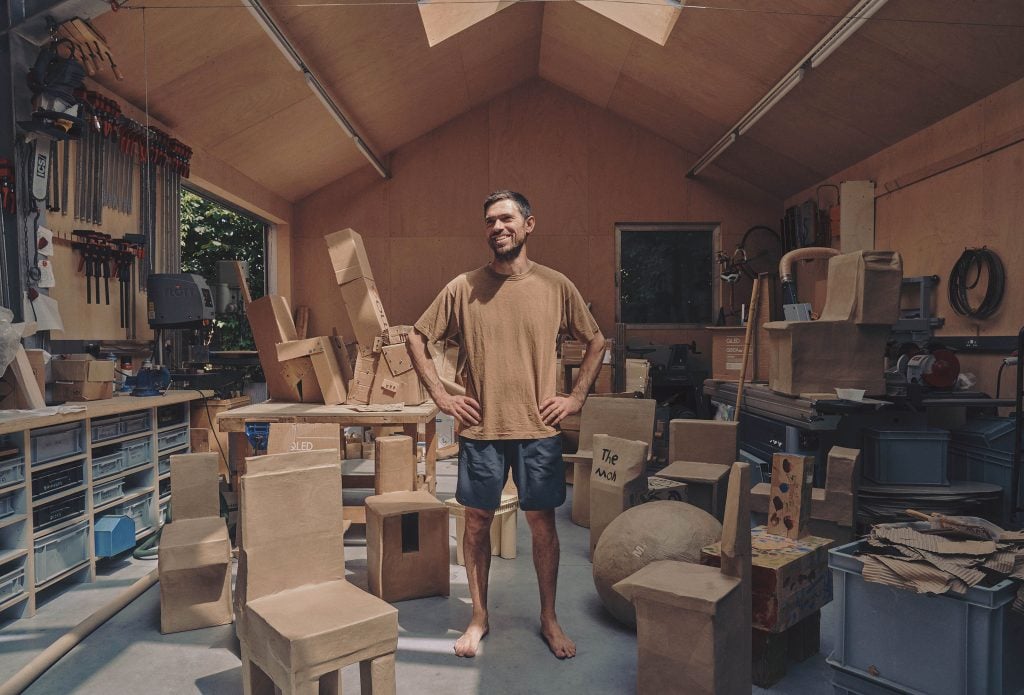
Last fall, designer Max Lamb took what he saw as an untenable situation, an onslaught of cardboard boxes that had been shipped to his London workshop in the course of his practice, and turned it into literal art. Shown at London’s Gallery Fumi during Frieze London, he presented 33 pieces of furniture—mostly chairs, but also tables and one (non-plush) sofa—made from the offending cardboard waste, elevating the humble material into gallery fare.
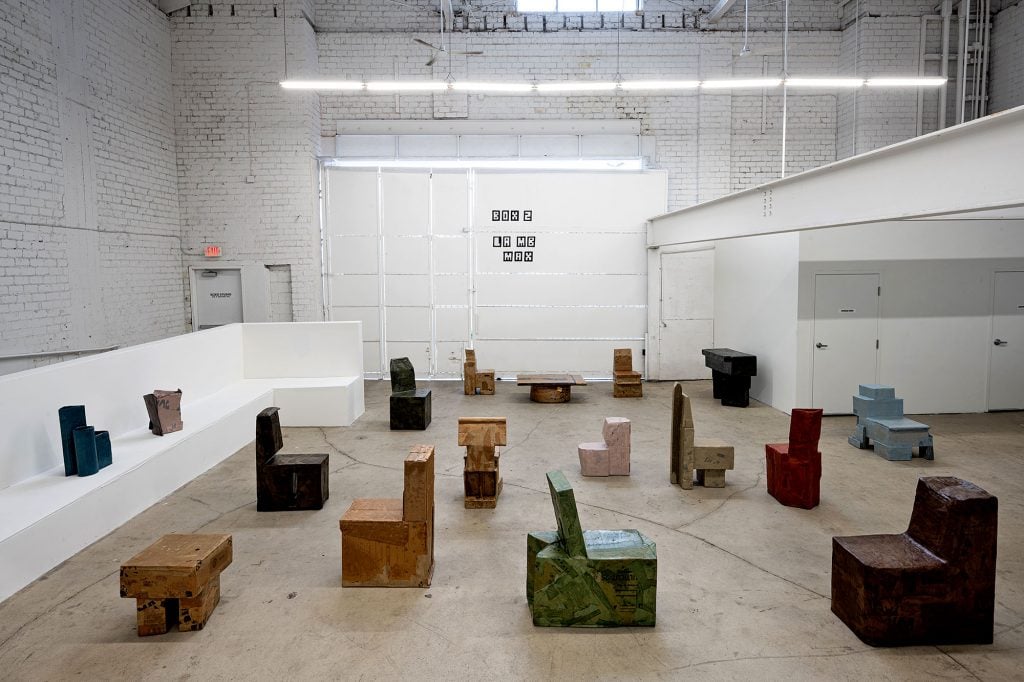
Max Lamb’s “Box 2” series show currently in Los Angeles.
Now, during Frieze L.A., he’s showing round two of the project. Fumi has taken over Sized Studio in the gallery-rich Melrose Hill with 17 more of Lamb’s cardboard creations. They’re mixed with other works from the gallery—which has made a name in the blue-chip design world by offering “aesthetically audacious” commissions on a low-volume, limited-edition basis—including a chandelier installation by British duo JAMESPLUMB and a monumental screen by Spanish artist and designer Saelia Aparicio.
Lamb’s works exude an honest physicality, the result of intense process, labor, and “experimentation with form and volume,” the artist said via video from the workshop, swiveling the camera to show a space filled to the rafters with his L.A.-bound works in various stages of completion. While cardboard isn’t completely eschewed (it’s used in prototyping his large, technically complex works, such as those in his “Boulders” series), “what’s new here,” he explained, “is that cardboard is the primary material. There’s something very seductive about it. It’s such an accessible, familiar material, and it has an inherent strength to it. It’s there to protect.”
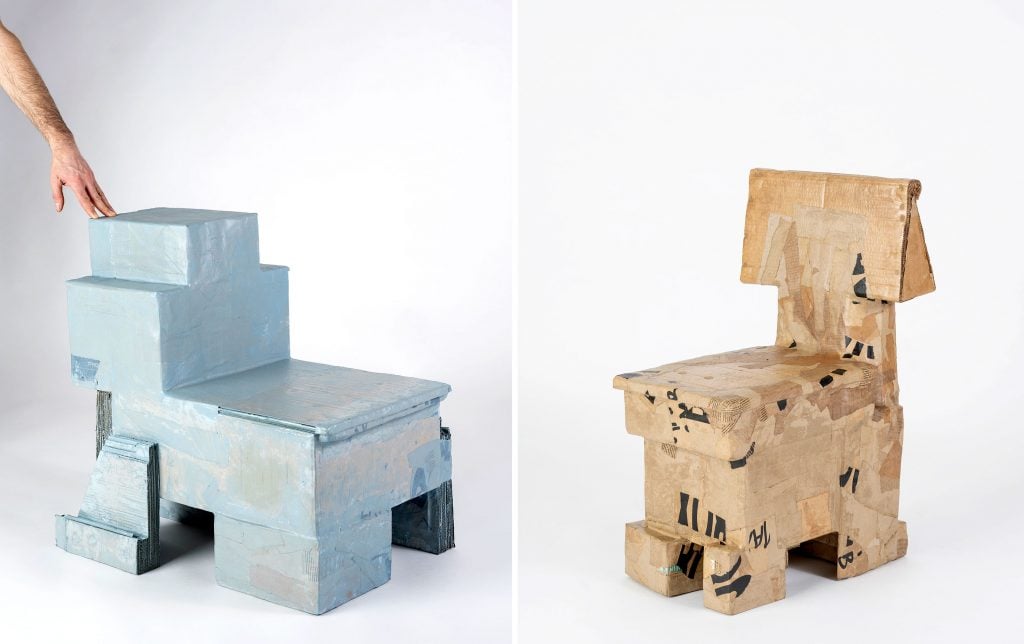
Two works from Lamb’s new cardboard series at Fumi in Los Angeles.
Either working with or against the boxes’ pre-cut shapes and pre-determined folds, Lamb builds up layers to create forms not unlike the cleft-wood, three-legged stools that have become his trademark, painted in black urushi lacquer from Wajima, Japan, sometimes in all-over gold, or cobbled together like the blockish pieces he created for Albania’s pavilion at the Venice Architecture Biennale in 2016. Like those seemingly crude pieces, he cuts, folds, crushes and reassembles bits of cardboard using a homemade wheat-based glue, sometimes employing as many as 15 layers of papier mâché.
He gets the irony. “It feels quite twisted,” he said, “the amount of time and labor that goes into producing this series compared to the actual material value of them.” As an example, he said he could be casting a work in £3,000 worth of pewter and finish it in a day compared to the two weeks or more that it takes to piece together cardboard, although free and readily available, and let the papier mâché and linseed coating dry. He chalks his fascination up to “this weird teamwork exercise between me and material, like we’re collaborators. Plus there’s a joy to cardboard. My seven-year-old son is in the workshop a lot because it’s just fun to play with.”
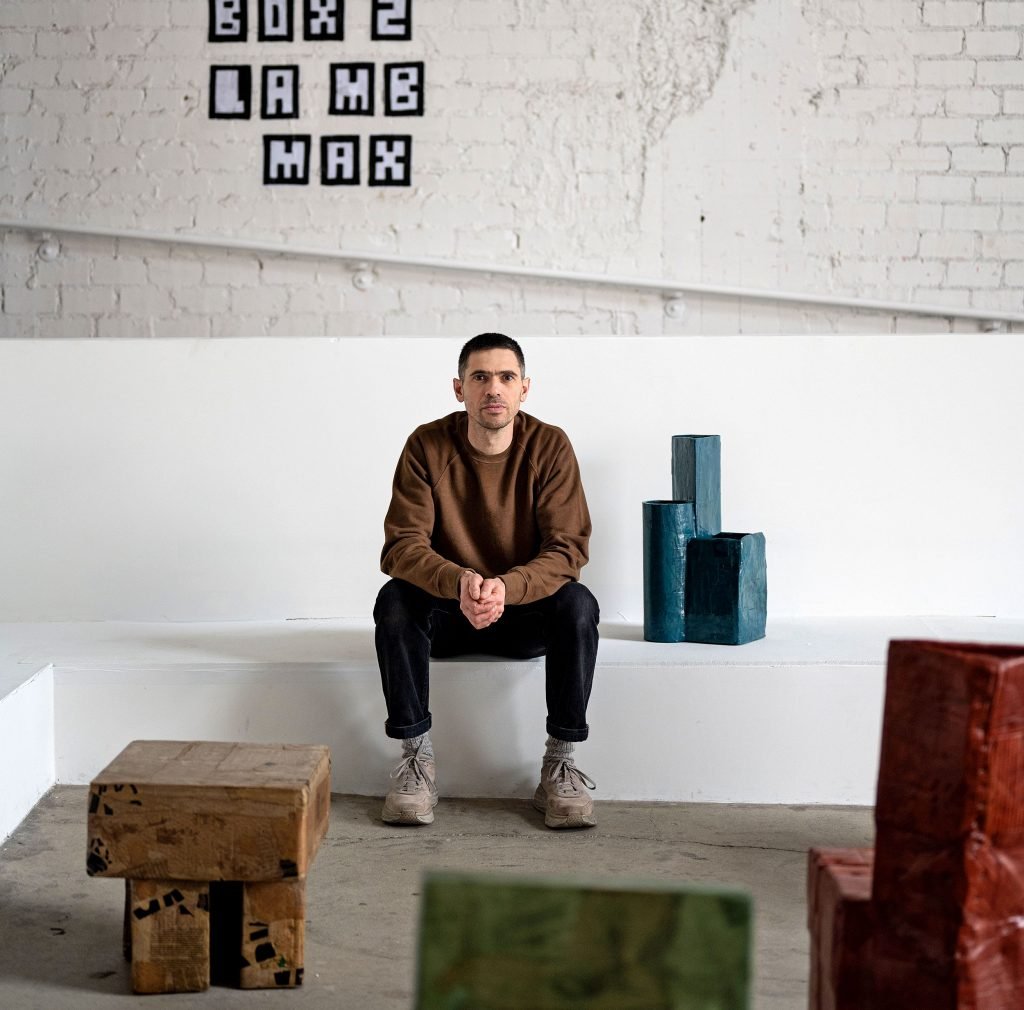
Max Lamb with several piece from his new series “Box 2” at Gallery Fumi in L.A.
The project has turned Lamb into something of a hoarder, although he’s developed a particular fetish for one kind of cardboard. “Last year I did quite a lot of furniture work for Acne Studios using leather. I don’t know why but the leather industry seems to use the most beautiful cardboard boxes, like the highest grade paper stock—incredibly rigid. I often wonder about that.”
Lamb has long been interested in natural processes and ideas around sustainability. For a 2015 project at Somerset House, he used every part of a stately old ash tree that had grown on his grandfather’s farm, but which had died and begun to decay. Lamb dissected the tree from the top down, slicing it into sections at regular intervals, which he transformed into finished logs, totaling 130 and laid out by diameter, with nearly 200 growth rings clearly visible.
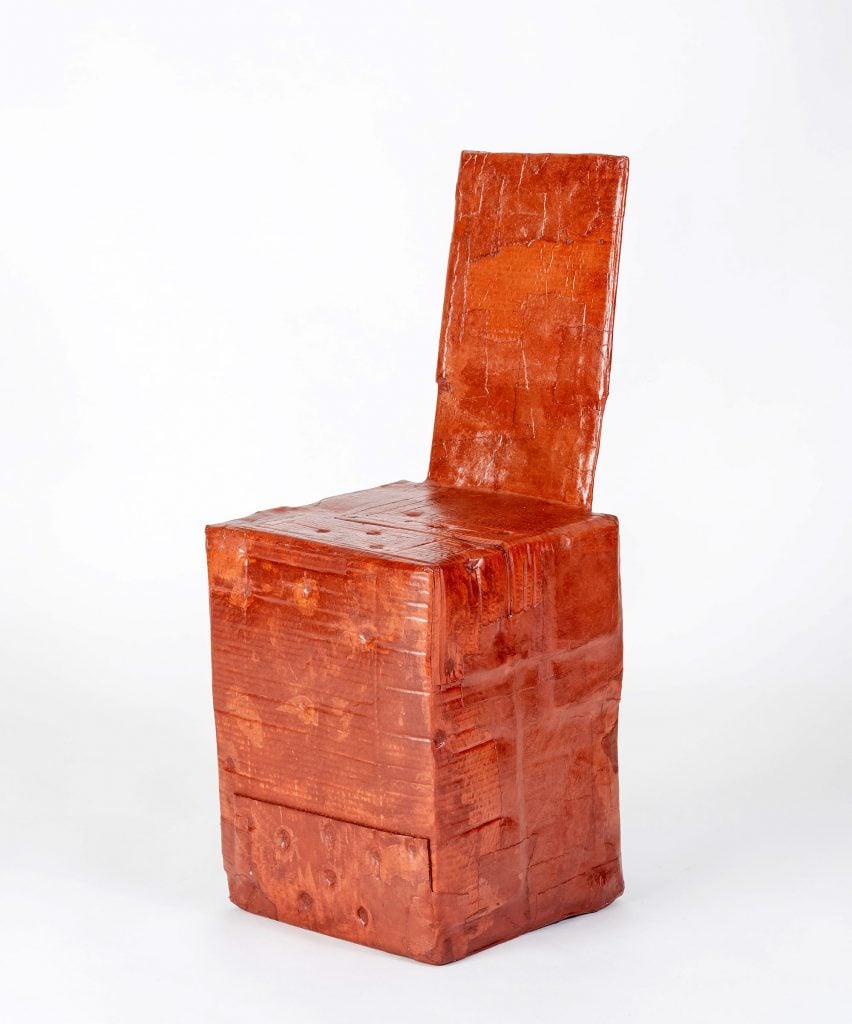
A work from Lamb’s new cardboard series at Fumi in Los Angeles.
It’s rather odd that someone who’s made an enviable career out of crafting chairs can’t bear to sit (“I do hate it, I find it very uncomfortable, I’ve got terrible posture.”) At any rate, that’s the least of his worries now. Just weeks before showtime, at this moment he’s mostly concerned about the British weather. “It’s an all-natural process. My work requires warm, dry Mediterranean weather—which Britain is not. So I’m thinking of just posting these to the gallery in L.A., without a box, only a shipping label. They might arrive a little sticky.”
Box 2 is on display at Fumi L.A. from February 21 to March 9, 2024.





